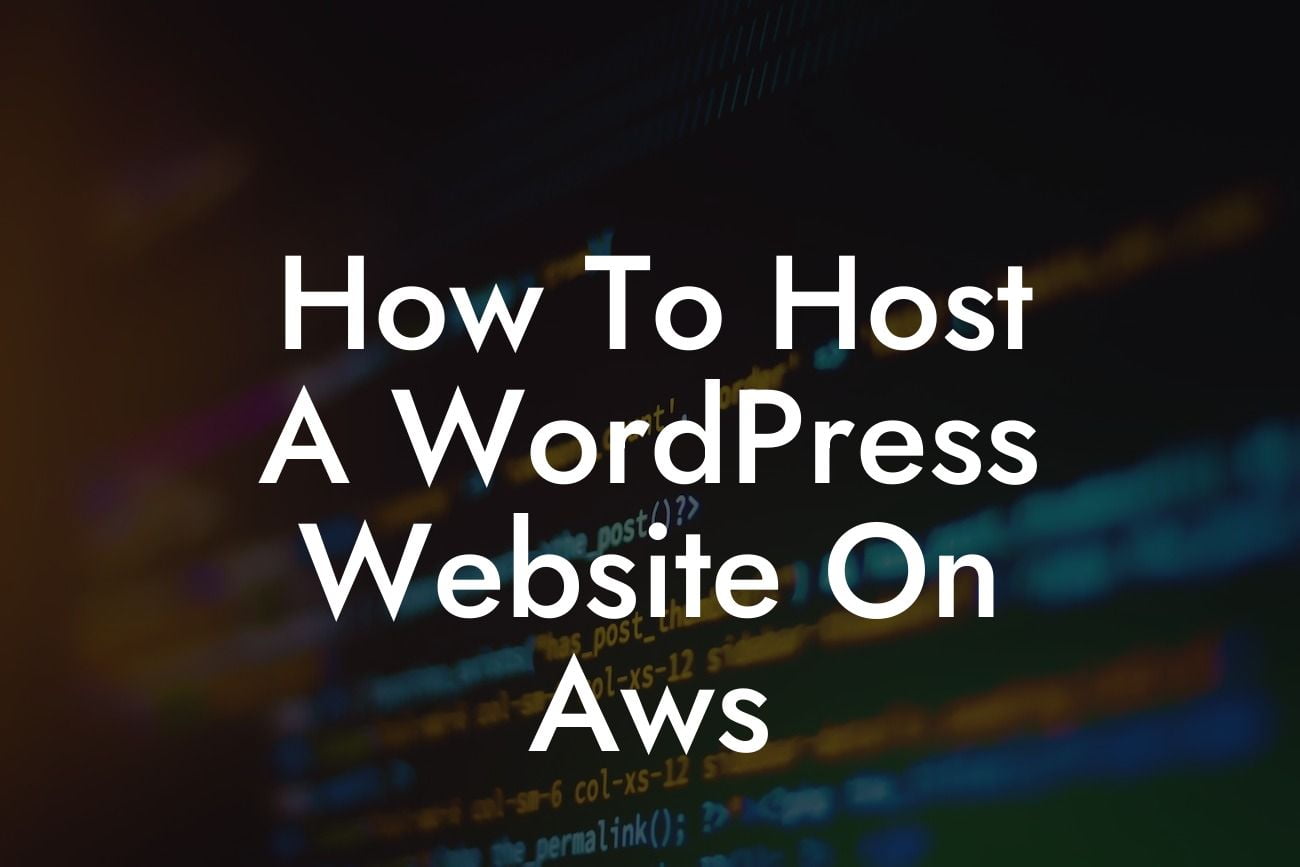Hosting your WordPress website on AWS can greatly improve its speed, security, and scalability. With AWS's powerful infrastructure and DamnWoo's expertise in crafting exceptional WordPress plugins, you can take your online presence to new heights. In this comprehensive guide, we will walk you through the process of hosting your WordPress site on AWS, ensuring that you have all the knowledge and tools to succeed. Say goodbye to the limitations of traditional hosting solutions and embrace the extraordinary with AWS and DamnWoo.
Hosting a WordPress website on AWS requires careful planning and execution. Follow these steps to ensure a successful migration:
1. Set Up an AWS Account: Start by creating an AWS account if you don't have one already. This will give you access to a wide range of services and resources.
2. Choose the Right AWS Service: AWS offers various services suitable for hosting WordPress, such as Amazon EC2, Amazon Lightsail, and AWS Elastic Beanstalk. Evaluate your requirements and select the service that best fits your needs.
3. Provision the Server: Once you've chosen your service, provision a server instance. Configure the server specifications, such as the operating system, storage, and networking options.
Looking For a Custom QuickBook Integration?
4. Install WordPress: After setting up the server, install WordPress. You can either download and configure it manually or use an automated installer like Bitnami.
5. Configure Security: Protect your website by configuring appropriate security measures. Set up a firewall, enable HTTPS, and regularly update WordPress and its plugins to patch vulnerabilities.
6. Optimize Performance: Enhance your website's speed and performance by implementing caching techniques, optimizing images, and leveraging AWS caching services like Amazon CloudFront.
7. Set Up Backups and Disaster Recovery: Ensure the safety of your website's data by implementing regular backups and disaster recovery solutions, such as Amazon S3 or EBS snapshots.
How To Host A Wordpress Website On Aws Example:
Suppose you are a small business owner looking to host your WordPress website on AWS. You have chosen Amazon Lightsail as your hosting service. By following the steps mentioned above, you successfully set up an instance, installed WordPress, and configured security measures. You optimized your website's performance by enabling caching and leveraging Amazon CloudFront. Additionally, you implemented regular backups using Amazon S3. As a result, your website is now faster, more secure, and fully prepared for future growth.
Congratulations! You've successfully hosted your WordPress website on AWS, leveraging the power of DamnWoo's exceptional plugins. With your website now faster, more secure, and scalable, you're well on your way to online success. But why stop here? Share this article with others who might benefit from it, explore more guides on DamnWoo to enhance your website's performance further, and don't forget to try our awesome plugins to take your online presence to the next level. Embrace the extraordinary with DamnWoo on AWS.













